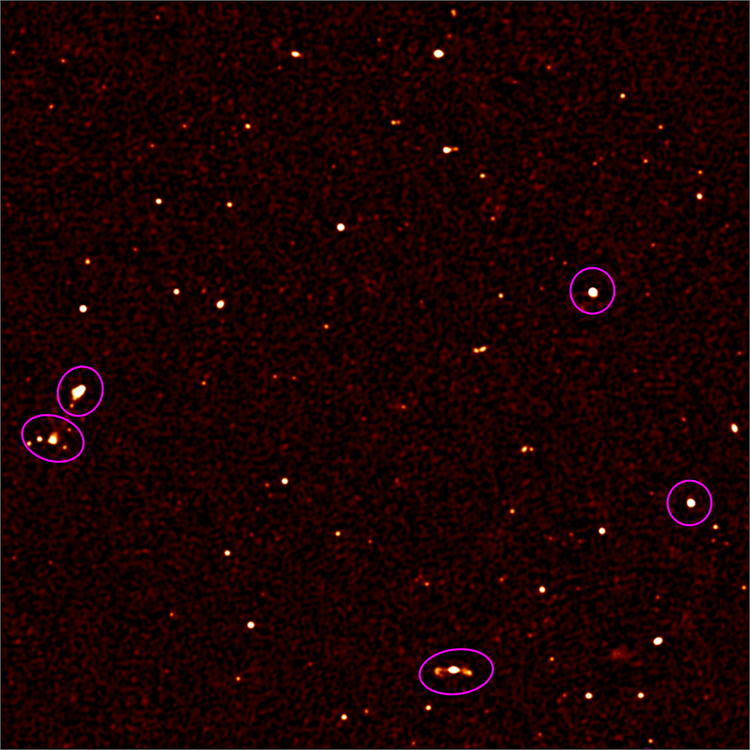Photo Information: A MeerKAT dish antenna scans the night sky above the dry Karoo region of South Africa. Credit: © SKA South Africa
On Saturday, July 16, a South African meerkat made international news, but it wasn’t one of the cute and cuddly critters of TV’s “Meerkat Manor.” This meerkat—or, rather, MeerKAT—is a radio telescope complex under construction near Carnarvon, South Africa, south of where the TV series studied actual meerkats in the Kalahari Desert. On Saturday, images from the first 16 MeerKAT reflectors (dish antennas)—in operation for only a few hours and looking at only a tiny corner of the universe—revealed black holes some 200 million light-years away and hundreds of previously unknown galaxies. A radio telescope consists of a radio receiver with an antenna fixed on a wide bowl-shaped reflector that records radio waves coming from stars and other objects in outer space.A radio receiver amplifies the signals and sends them to a computer. The computer then analyzes the radio spectrum of the wave source to produce an image.
The KAT in MeerKAT stands for Karoo Array Telescope, which refers to the complex’s location in South Africa’s remote Karoo semidesert region. MeerKAT, which will have 64 reflectors when completed late next year, is the first phase of Square Kilometer Array (SKA) South Africa that will eventually have 250 antennas. SKA South Africa will then pair with a SKA complex of 256 antennas being built in Western Australia. Together, they will explore and measure the universe at different radio frequencies. If the first few hours of the first 16 SKA reflectors are any indication—which glimpsed less than 1/100th of 1 percent of the celestial sphere—imagine what 64, then 250, then 506 antennas mapping huge areas of the sky might find!

This portion of MeerKAT’s first radio image shows more than 200 astronomical radio sources (white dots). Previous mapping of this area showed just five sources, marked here by the violet circles.
Credit: © SKA South Africa
But wait, there’s more! This is only SKA Phase 1. SKA Phase 2—scheduled to be operating by the mid-2020’s—will eventually include thousands of radio telescope antennas throughout Africa and Australia. The SKA project will no doubt enhance our understanding of the universe and may possibly even change it. It will also test our current understanding of physics and expand our technological grasp. SKA has a number of key objectives, such as investigating the origins and structure of the universe and studying gravitational waves and astrobiological (the search for and study of life in the universe) possibilities. But the project’s statement purpose, “Exploration of the Unknown,” reflects the expectation that SKA will discover things we cannot yet conceive
View more Behind the Headline stories in World Book Online!
When you need fast, reliable information for homework, reports, or just a lingering question, World Book Online is the place to go.
- A colorful, approachable look and feel, designed for kids, and articles written at your student's level
- Easy access on smartphones and tablets
- Five complete databases for multiple research levels
- Illustrations, maps, audio files, videos, eBooks, primary source documents, and more
Learn More | Buy Now